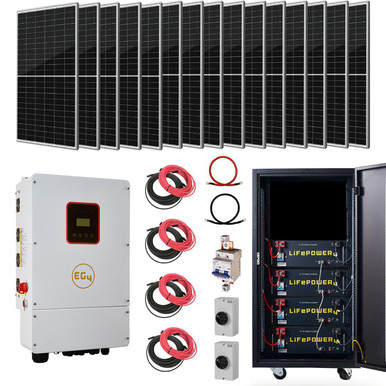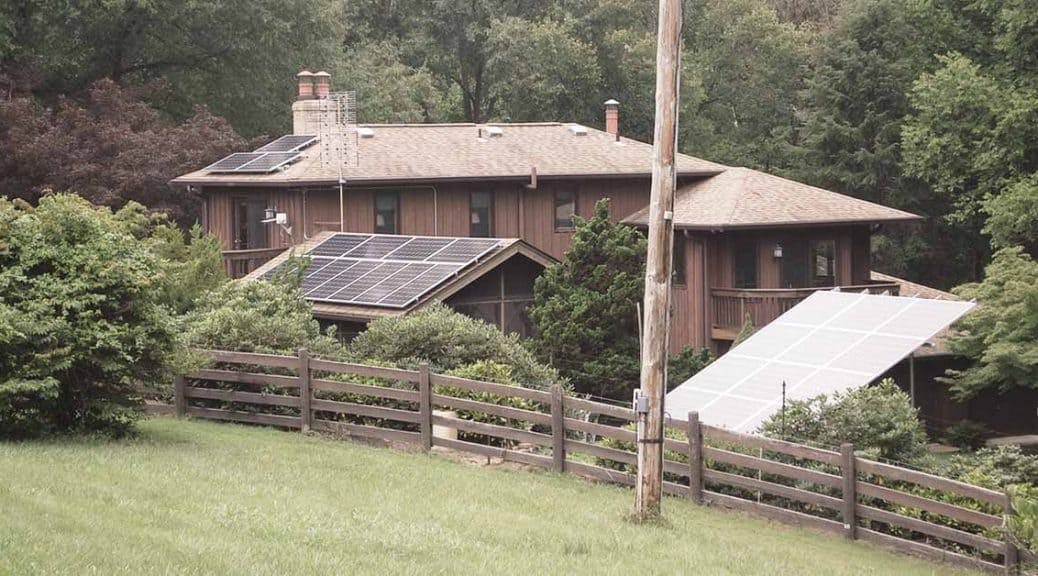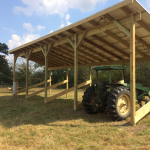- Messages
- 20,168
- Location
- Springfield, Missouri
So with the power outages we had the last couple of days, I decided to start looking into solar again. The previous controllers/inverters I had seen were "off-grid", separate systems from utility power. However, there are some Hybrid Inverters out now that let you connect utility power, solar, or even a generator to charge the batteries and you choose the priority of which power gets used. So if I have solar, it will use solar for charging and direct use, then go to battery, then to utility power.
Most of the solar setups I've seen are where you can feed back to the grid, which I'm not interested in doing, as when the utility power goes down, you're not allowed to use the solar power either.
I want to use solar and battery power when the utility power is down. I know some of the solar companies are starting to sell battery walls and such for such use, but they charge a whole lot more than I'm willing to pay for something I can setup myself. I think my FIL paid around $40,000 for his install, which didn't include the battery backup as it was another $15,000.
I still need to figure out just how big of system I want to do, but there are several kits for 8,000W - 13,000W in the $15,000 = $18,000 range, which still isn't cheap, but a whole lot cheaper than the solar companies are charging for their installs. One I'm considering...

 signaturesolar.com
signaturesolar.com
I'll most likely start with a backup panel, to run lights, the well, heating, some kitchen appliances, and internet. I already purchased generac panel for our old house that didn't get installed. I'm thinking I'll go ahead and start with it using the generator, but maybe replace the generator plug with solar when we get to that project.
Most of the solar setups I've seen are where you can feed back to the grid, which I'm not interested in doing, as when the utility power goes down, you're not allowed to use the solar power either.
I want to use solar and battery power when the utility power is down. I know some of the solar companies are starting to sell battery walls and such for such use, but they charge a whole lot more than I'm willing to pay for something I can setup myself. I think my FIL paid around $40,000 for his install, which didn't include the battery backup as it was another $15,000.
I still need to figure out just how big of system I want to do, but there are several kits for 8,000W - 13,000W in the $15,000 = $18,000 range, which still isn't cheap, but a whole lot cheaper than the solar companies are charging for their installs. One I'm considering...

Complete Hybrid Solar Kit - 8,000w 120/240V Output + 20.5kWh Lithium Powerwall + 10,920 Watts of Solar PV | [KIT-E0004]
Signature Solar provides solar panels, off-grid solar systems, grid-tie, and hybrid systems. Quality solar inverters, bifacial solar panels, complete solar kits, solar batteries. Featuring brands such as EG4 Electronics with their solar battery, LifePower4 and EG4 LLifePower4 and EG4 LL
 signaturesolar.com
signaturesolar.com
I'll most likely start with a backup panel, to run lights, the well, heating, some kitchen appliances, and internet. I already purchased generac panel for our old house that didn't get installed. I'm thinking I'll go ahead and start with it using the generator, but maybe replace the generator plug with solar when we get to that project.





